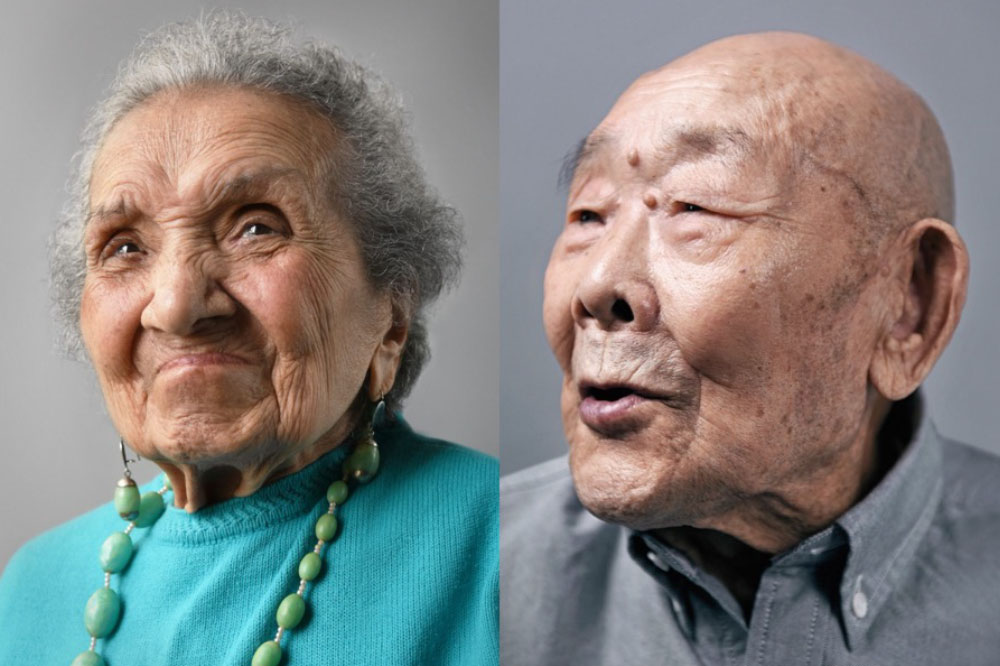It feels like the discourse on aging, especially when it comes to women, revolves around “aging gracefully”. This generally involves looking at least three to five years younger than we are, effortlessly. It also means “acting our age”, by wearing age-appropriate clothes, having age-appropriate hair, and doing age-appropriate activities — but maybe doing one or two surprisingly youthful things (surfing, maybe, or dancing) that don’t seem like we’re trying too hard yet let people know we’re still in the game.
“Aging gracefully” entails walking a tightrope between a youth-obsessed society, which tells us that our value declines as we age, and a culture that says nothing is as uncool as desperation: the person who ages without thought to their appearance is written off as “having given up” and the one whose face remains 35 forever thanks to the surgeon’s knife is considered a joke.
What if, instead of seeing aging as something to defeat and conquer, we just embrace what gets better with age, and work to amplify these joys while mitigating the losses of youth? I’m not suggesting we paper over the very real challenges, both physical and mental, that come with aging. But can we view these challenges without judgment or shame and instead look for joyful ways to navigate them, so we balance wisdom with wonder, and confidence with curiosity?
Here are 8 insights that can help us think about joyful ways to feel well as we grow older. The pandemic has made some of these activities challenging or impossible, but as things start to open up again, they can offer great ways to age joyfully:
- Seek out awe and wonder. In a study of older adults, researchers found that taking a walk specifically focused on attending to vast or inspiring things in the environment, increased joy and feelings like generosity and kindness, more than simply taking a stroll in nature. These walks were only 15 minutes long, once a week, and low impact.
- Get a culture fix. In a 1996 study of more than 12,000 people Sweden found that attending cultural events correlated with increased longevity, while people who rarely attended cultural events had a higher risk of mortality. Since then, many studies have affirmed that people who participate in social activities such as going to the cinema, playing cards or bingo, or going to restaurants or sporting events, is linked with decreased mortality among older adults.
- Stimulate your senses. Enriching our environments with colour, art, plants and other sensorially stimulating elements may be a worthwhile investment. Just as our muscles atrophy if we don’t exercise them, our cognitive capacity diminishes if we don’t stimulate our senses.
- Buy yourself flowers. A study of older adults found that memory and mood improved when people were given a gift of flowers, which wasn’t the case when they were given another kind of gift. Why would flowers have this effect? The passive stimulation we find in looking at greenery helps to restore our ability to concentrate, and improved attention also results in improved memory. Research has also shown that gardening can have mental and physical health benefits for older adults.
- Try a time warp. In 1981, Harvard psychologist Ellen Langer ran an experiment with a group of men in their 70s, “the counterclockwise study”. For five days, they lived inside a monastery that had been designed to look just like it was 1959. There were vintage radios and black-and-white TVs instead of cassette players and VHS. The books that lined the shelves were ones that were popular at the time. The magazines, clothes and music were all throwbacks to that exact period. But these men weren’t just living in a time warp. They also had to participate. They were treated like they were in their 50s, rather than their 70s. They had to carry their own bags. They discussed the news and sports of 22 years earlier in the present tense. And to preserve the illusion, there were no mirrors and no photos, except of their younger selves. At the end of five days, the men stood taller, had greater manual dexterity, and even better vision. Independent judges said they looked younger. In 2010, a BBC programme recreated the experiment with aging celebrities to similar effect. Langer’s subsequent research has led her to conclude that we can prime our minds to feel younger, which in turn can make our bodies follow suit. How about a mini-time warp: revisiting a holiday spot you once loved and steeping yourself in memories from an earlier time; or a getaway with friends where you banish all talk of present-day concerns; or finding a book or a stack of old magazines from the past and reading them while listening to tunes from that era?
- Maximize mobility. Movement has been shown in studies to increase the size of the hippocampus, a part of the brain that plays a vital role in learning and memory. This is important because the hippocampus shrinks as we age, which can lead to memory deficits and increased risk of dementia. In addition to its cognitive effects, movement itself can be a source of joy. Also, investing in our mobility now can help preserve range of motion and minimize repetitive stress injuries later. We only have one body, and it has to last our whole life. The more we do now to care for it, the more freedom we’ll have to do the things we love later in life.
- Refeather your nest. The phrase “empty nest,” carries strong connotations of loss and deprivation. The idea of an empty nest suggests that there’s nothing left, while refeathering takes a more ecological lens, imagining a kind of regeneration that happens as the home, and the family, transforms into something new. A refeathered nest is a place of possibility, creativity and delight.
- Keep up to date on tech. Some studies show that for older adults, being technologically competent can offer a boost to well-being. One reason is that internet use can provide social connection, which is one of the most important contributors toward mental health and well-being throughout life, but especially in old age. Other studies suggest that when older adults lack the skills to be able to use technology effectively, it leads to a greater sense of disconnection and disempowerment and that training on technology can promote cognitive function, interpersonal connection and a sense of control and independence. Small choices not to engage with a new technology don’t matter much in the moment, but once you get a few steps down the road to disconnection, it can feel intimidating to try to plug back in. Staying engaged with new technologies doesn’t have to be a burden. It might simply mean saying yes when a niece or nephew invites you play Minecraft or opening a TikTok account just to check it out. We don’t have to master every new app, but being comfortable with new developments can help to ensure we don’t end up feeling helpless when the tech we rely on everyday changes.




